

 |
|
|
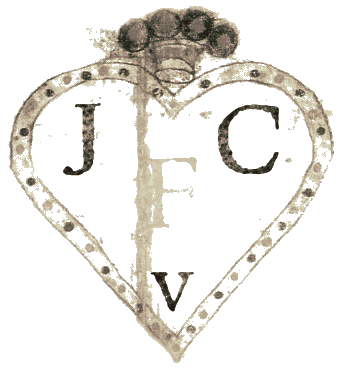
|
Affinity The darker type of the fiction written in and about the Victorian era usually deals with hidden and repressed sexuality or the contemporary obsession with spirits and contacting the dead. Sarah Waters' novel mixes both these concerns and throws in the treatment of prisoners. Margaret Prior (played by Anna Madeley) is a middle-class woman recovering from the death of her father and the loss of her lover who's recently married her brother, and attempts to lose herself in becoming a prison visitor, offering support and hope to women incarcerated in the Bankside Prison. She becomes obsessed with a quiet inmate who has a reputation for spookiness and was locked up for a murder linked with her spiritualist activities. The waif in the whitewashed cell is played by Zoe Tapper, who also impressed mightily as the tart with no heart in the Twenty Thousand Streets Under the Sky adaptation reviewed at the bottom of this page. This ITV adaptation by Andrew Davies (who else?) was one of the highlights of telly over the 2008 Christmas period and makes some fine and thoughtful viewing out of the novel. There's a bit of discreet lesbian action, but nothing to embarrass elderly relatives. The ending adds a romantic bit of business to an otherwise stark outcome, but can almost be forgiven as it looks great! As does the special effect of the Bankside Prison (right). But most of the location work seems to have filmed in Bucharest. Out on DVD in the US and the UK. |
 |
|
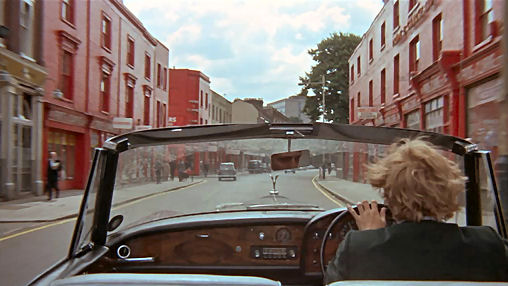 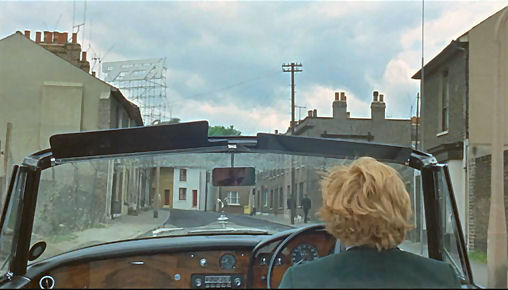 |
Blowup One weekend in the life of David Hemmings, a photographer in Swinging 60s London. He emerges from a doss-house, where he's been photographing poverty and suffering, hops into his Rolls Royce and returns to his studio to photograph skinny 'birds' with too much make-up and lots of 60s hair. Later he visits a park and photographs a secretive couple, one half of which (Vanessa Redgrave) freaks out and follows him to his studio. He finds foul play in blowups of the photos he took and...stuff happens. It's a weird mix of big-studio values and odd 'European' artiness, with slow passages, non-natural dialogue, and a strange jeep full of mime artists which appears at the beginning and the end of the film. Much of the filming is in South East London around Woolwich - the park definitely and the doss house and studio too maybe, but it has a West London mewsiness to it. The park is Maryon Park in Charlton. The mime artists appear at first in a modern bit of development behind Piccadilly, which must have just been built when the film was made. Later Hemmings drives down London Wall past a bomb site which is now the Museum of London (below). The 'drug-party' house is in Cheyne Walk in Chelsea. Oddest of all is the strange neon sign which looms over the park (left below), and which must've been specially erected. And there's an odd street with all the shops painted red which was real, according to a recent correspondent - they were all Pride and Clarkes, who sold bits for motorbikes in the Stockwell Road. All in all an enjoyably puzzling film, of its time but not jarringly dated. Illusion, perception, reality...whatever. 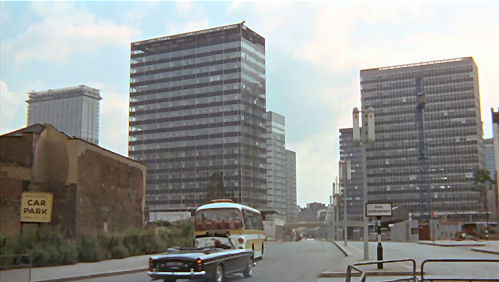 |
|
|
|
||
|
Closer Famous, at least in these parts, for the Postman's Park (see capture below) plot device at the end, this has lots of London in it, but lacks that certain something in most other areas. The vista in the screen capture to the right is NOT from the restaurant in the bookshop now occupying the old Simpsons store. in Piccadilly, as I initially (and lazily) thought and wrote, but seems to be from a mystery location behind the National Gallery.
|
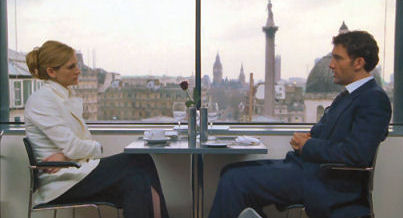 |
|
|
Death Line a.k.a Raw Meat A classic horror film of the 70s, and a classic London Underground film. Cannibals haunt the Piccadilly Line and when a peer disappears at Russell Square (a station which acquired an even more gruesome reputation after recent bombings) the police have to act. Which gives Donald Pleasence a chance to grouch it up hugely as a cockney version of Inspector Morse. His performance makes the film, as do the gruesome slow tracking shots through the cannibal's lair and some fine creepy tunnels. These tunnels are rumoured to have been shot at some disused railway properties in Shoreditch. (More info on this would be welcome.) But there's not much more location fascination, to be honest. The last cannibal, who loses his pregnant wife at the beginning of the film, is, for a murdering, drooling and shambling would-be rapist, a sad character in the Frankenstein mould, whose only English is 'mind the doors'. Death Line also uses the long-closed (British) Museum Station in the plot and verily has many moments. It was remade as Creep in 2004. |
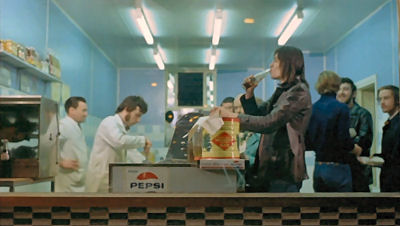 |
|
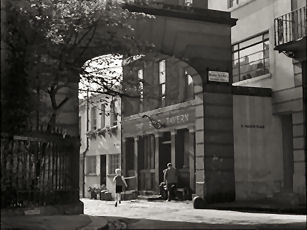 |
The Fallen Idol From the same writer/director team that gave us The Third Man - Graham Greene and Carol Reed - comes a less wonderful, but still great, film set in post-war London. It's the story of Phillipe, a French ambassador's son, who idolises the embassy's butler but thereby becomes involved in murder and is forced into a series of progressively more serious lies. The butler, Baines, is played by a somewhat youthful Ralph Richardson and Phillipe by Bobby Henrey, who only made one other film and now lives in Connecticut. The black and white photography is striking, and there are some impressively plush Belgravia locations, featuring wide roads, narrow alleys and some fine old cars and an over-used horse and cart. The embassy itself is now the HQ of St John's Ambulance in Belgrave Square, and the mews with the pub and tea rooms that Baines frequents is Belgrave Mews; but nasty modern buildings have robbed the latter of atmosphere. Also worth a mention are a trip to Regent's Park zoo and Phillipe's night-time dash in his 'jamas through spooky damp back alleys. |
|
| Fingersmith Another fine BBC adaptation of a Sarah Waters novel, but this time not involving Andrew Davies. I reviewed the novel here, so I'll just comment on the adaptation here. The first half sets things up and takes us through the plot, before a twist messes with our preconceptions and takes us into the second half which revisits the first half in the light of the twist, and then moves onto a rollercoaster of more twists. Elaine Cassidy and Sally Hawkins shine and excel as the leads, the latter going on to annoy in Mike Leigh's Happy-go-lucky and impress in Twenty thousand streets under the sky (reviewed below). Imelda Staunton is as good as ever and Charles Dance does his crusty and threatening thing once more. London locations are provided by Somerset House (see right) whose courtyard stands in for streets, as it has done in almost all period-piece dramas on film and TV in the past decade. The wells under its windows are also pressed into service as over-buttressed alleyways like there never were in London, a trick learned from the film of Wings of the Dove. Lant Street, the squalid Borough location, looks like a set to me, although the building behind the scaffold (to the left of the screen capture below right) might be real. And the eagle-eyed might notice that the servant who the young Maud chucks her gloves at is Sarah Waters herself. Finisterre Made in 2003 in somewhat self-conscious thrall to The London Nobody Knows (see below) for the band Saint Etienne, this is more than a mere album promo, but less than the work of art it's claimed to be. There's a portentous voice-over and chat from the band's mates between the music, but the visuals, although pretty, are a bit too static for me. There's some nice scenes filmed from Primrose Hill and of London in torrential rain, but the coverage of graffiti and the scowling council estate kids, for example, is a bit predictable and obviously 'now'. Maybe the film needs a few decades of hindsight to find its place. The commentary on the DVD, by film-makers Kieran Evans & Paul Kelly and St Etienne's Bob Stanley, actually adds interest, by telling you who's talking, and stuff about the places filmed. |
|
|
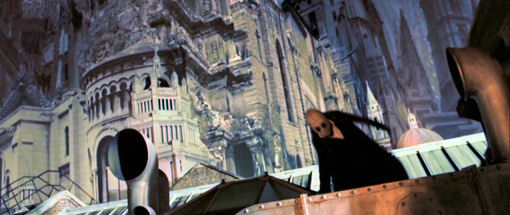 |
Franklyn This film did not get well-reviewed on release, but I have to admit that I liked it a lot. There are three characters in three plot strands set in present day London. They are all people dealing with loss and vacancies in their lives. The forth character is also dealing with a similar painful loss, but his way of coping is to retreat into an alternative city, called Meanwhile, and so his strand is distinctly sci-fi. This vaguely steam-punky (and very gothic) city is neatly meshed with the real London, with regard to both the plot and how the vast computer-created vistas blend with bits of real architecture. There's much filming around the Naval College in Greenwich, as ever, with the roofscape of the Victoria and Albert Museum featuring too, I think, and the interior of the Royal Courts of Justice. On a personal note the artist's loft with the restaurant over the road are just up the road from my old school, in Leonard Street, between Shoreditch and the City. In one shot you can just catch a view of the edge of a very churchy-looking old hall which our class only ever used once, and which was as dilapidated and dustily gothic as many of the locations in this film. I think that if this film had done without the sci-fi bits and had a name like Michael Winterbottom attached to it it would've got better reviews, and been very much less interesting. |
|
| Frenzy In the opening credit sequence here a helicopter flies along the Thames and through Tower Bridge, looking pretty grimy before it got a cleaning. It's interesting to see the river while it was still full of barges and life. The action of Hitchcock's 60s serial killer story is set mostly in Covent Garden, and it's interesting to see this area when it was still a busy fruit and veg market. It's also odd to see Anna Massey as a sexy barmaid and Bernard Cribbins playing a bastard. The film is not without its shaky bits of script and acting, but the Hitchcock touch shines through and makes for a reliably gripping entertainment. Good to hear the actors speaking proper Cockney-type English too, and not the unconvincing Hollywoodised version we mostly get. Fans of classic Hitchcock should beware, though, of the nasty rape scene, amongst others, along with some ripe dialogue, which earned the director his first 18 Certificate, or X as it was known back then. |
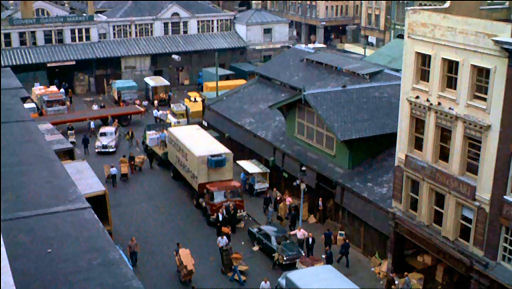 |
|
|
Hidden City This was a Stephen Poliakoff film broadcast on Channel 4 in 1988. It's very much of its time: it stars Charles Dance and Bill Paterson, it's all about paranoia and secrets, and the haircuts and clothes are atrocious. Dance plays an academic who is approached in the street by a wild and straggly young blonde girl with an obsession. She's seen something strange on some old film, and needs his help tracking down another canister. Their quest takes Dance out of his yuppie comfort zone and both of them through a lot of the famously hidden and abandoned parts of London - the Kingsway Tram Tunnel, the Goodge Street Tube Tunnels, Postman's Park and the St Pancras Hotel, for examples. There are times when the dialogue slips into that typically Poliakoff unnaturalness, but this is mostly well-performed and human stuff, with no little humour and wit. The theme of the impermanence and undervaluing of history and records runs through the more usual 80s stuff about the all-powerful 'them' and what 'they' don't want us to know. As something of a lost grail for fans of lost and abandoned London it's fitting that this is viewable only as a murky downloadable copy of an old VHS tape. Or in the BFI's swanky videotheque. |
||
Hue and cry An Early Ealing comedy set in the post-WWII London of riverside ruins and bombsites, this features Norman Fowler as one of a gang of urchins who live amongst these ruins. He went on to become a TV rent-a-cockney supporting face in later decades but here, as a somewhat unyoung child star, he stars credibly. The story involves his gang uncovering criminal activities which are communicated to the crooks themselves through a children's comic. The comic is called The Trump and is based on more text-based early comics, like The Rover and the stories are Sexton Blake-like. As the kids match the fictional stories to real-life crimes they meet up with the author (an eccentric performance, even for him, from Alistair Sim) and then try to convince the police with, of course, little success and have to track down the villains themselves. It's all good gripping fun played out against a crumbling back-drop of bombed-out houses and dockside dilapidation. All very evocative if you like that sort of thing, and I do. The final showdown is especially full of fine scenery, with some geographical liberties played too, like transposing the steps by the ICA to the City riverside. Lots of mysterious and yet familiar locations to identify - more stills here.
|
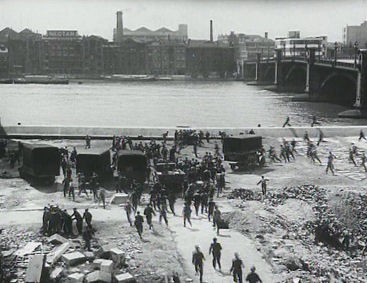 |
|
|
|
It always rains on Sunday Well it sure does on this one! Over one dreary wet Sunday in Bethnal Green just after the war and so still full of bombsites, spivs and petty crims in long overcoats with their hands in their pockets. And police detective Jack Warner, of course, on the trail of some knocked-off rollerskates. He's also looking for a local boy who's just escaped from prison and who turns out to be hiding in Googie Withers' Anderson shelter. She helps him out for old love's sake (they were once engaged) as her family tries to get on with their ordinary Sunday lives and loves and she tries to hide him from them. A lot of this was filmed in Chalk Farm, in fact, but there's scenes filmed in Petticoat Lane and the whole thing reeks of post-war London, down to the tense final chase through a noirish wet and steamful goods yard. The patter is pickle-sharp and authentic too. This is about as close as any Brit film of the period got to film noir style, and was directed by Robert Hamer, who also directed Kind Hearts and Coronets, a more typical Ealing gem.
The Lavender Hill Mob |
|
|
|
||
|
The London Nobody Knows A short film based on the book of the same name by Geoffrey Fletcher, this sees James Mason picking his way around London's less groovy and more endangered locales in 1967. Derelict theatres, Victorian lavatories, a gas-lighter in the Temple, pie & mash shops (see below right) and squalid Spitalfields with its local meths drinkers are all included and bid farewell to, mostly. But the tone is unsentimental, and the fact that some of the film's subjects might not be missed is readily admitted. There's some fine views of the still-busy Thames (right) as well as mini-skirts in Chelsea and street markets in Islington and Marylebone. The reputation of this film has grown in recent years and it has become the Citizen Kane of the psychogeographically inclined, and inspired the likes of Finisterre and Patrick Keiller's London. Having lately only been watchable as excerpts on YouTube The London Nobody Knows was recently (February 2008) released on DVD in the UK coupled with a complete waste of time called Les Bicyclettes de Belsize. They are depressingly billed as 'two gems of swinging-sixties cinema' and are both now included in a boxset called The London Collection, which also includes Port of London, The Small World of Sammy Lee, and The Yellow Balloon (all reviewed below). |
|
|
|
|
|
|
|
|
Match Point When this film came out there was much talk in the reviews of how Woody Allen couldn't write authentic dialogue into the mouths of real Brits, and how he'd resorted to tourist-cliché London locations. Well, convincing as these observations sound, when you come to see the film they turn out to be tosh. Jonathan Rhys Meyers, the lead actor, sounds pretty wooden at times, but overall the (mostly British) actors sound fine. OK maybe the two cops at the end are a bit stilted, but that's about it. The locations seem pretty appropriate too - everyone is going to the bloody Tate Modern these days, and where better for a courting-couple to take a stroll than Green Park? (As long as they avoid bumping into all the spies that meet there, according to most films featuring Brit secret-service types.) The film itself, in its themes and pace and style, is refreshingly un-Woodyish, if not exactly great. |
|
|
Night and the City Richard Widmark, Gene Tierney, and Mike Mazurki are not actors you're surprised to find in a film noir - Googie Withers in one is more unusual. This is the story of a heartless spiv, played by Widmark, trying to make something of himself in post-war London, his latest scheme being taking on the gangster who rules the wrestling roost, played by Herbert Lom. Not much happens during the daytime - the film is full of Soho and Covent Garden at night, with much dock and riverside action too. It's all bomb sites, shiny streets and illuminated smoke. It's noir credentials are based on the look rather than the plot, which is a grimmer take on the human condition than even the usual noir morality exhibits. There's more of Hogarth and Dickens about it than Chandler or Hammett. The only admirable character is a handsome sculptor, for example, who nonetheless can't cook a pan of pasta. A sharp and grimy gem of a film nonetheless. Piccadilly For a silent film made in the 1920s this 0ne seems very knowing and modern. It's the story of the owner of a Piccadilly nightclub who transfers his affections from the dancer in his regular pairing to a Chinese girl who he finds dancing in the scullery, and lives to regret it. The fact that the regular pair of dancers are called Vic and Mabel places this film in more innocent times, but this is nonetheless a pretty sexy film, with its broad hints at naughty goings-on. It's also pretty stylish, with some particularly lovely lighting, and indeed light-fittings. Not much in the way of recognisable locations, as the camera technology wouldn't allow much roaming, I think, although the camera does move around quite nippily at times. Some fragrant Limehouse locations are well evoked, though, well before the Limehouse opium den became such a low-life cliché in period films and TV. Pool of London 1952 A ship sails into the bustling Pool of London and berths opposite the Tower. Two of the sailors from the ship - one American, one Caribbean - come ashore for some recreation, and soon become involved with jewel thieves in need of someone to do some smuggling. There are blonde girlfriends, a posh acrobatic music-hall turn, Alfie Bass, and lots of London. Slimy alleys around the docks with gantries above, Borough Market when it was real, the Thames when it bustled and bristled with cranes, St Paul's and surrounding bomb sites, tram rides, Southwark Cathedral looking dirty... the locations just keep coming. The acting's a bit shaky at times, but not as much as you'd expect, and the plot grips nicely. The inter-racial romance is dealt with in a way which pulls no punches but also doesn't dwell or explore. (Earl Cameron, the actor who played the black sailor, went on to become a fixture of UK TV, appearing in Danger Man, Doctor Who, The Prisoner and Dixon of Dock Green, amongst much else.) But it's London that's the star here, and you'll admire the realism of its performance. Susan Shaw (real name Patsy Sloots) who plays Pat in Port of London, also starred in London-film gems It Always Rains on Sunday and London Belongs to Me. She later married Bonar Colleano, the American actor who plays the central sailor. He died in a road accident in 1958, after which Shaw left acting and went into an alcohol-fuelled decline. She died penniless in 1978 at the age of 49, from cirrhosis of the liver. Her funeral was paid for by The Rank Organisation, and attended by none of her ex-colleagues. The DVD of this film is included in a boxset called The London Collection, which also includes The London Nobody Knows (reviewed above) and The Small World of Sammy Lee and The Yellow Balloon (reviewed below). |
|
|
|
|
A Run For Your Money
1950 A pair of Welsh miners win a competition and get to travel to London to collect their cash a watch a rugby match. Alec Guinness is a gardening journalist who's arm is twisted to meet them, but he misses them and they get picked up by Moira Lister as a con artist out to fleece them of their winnings. They turn out to be less easy marks than she imagines, but their innocence feeds many adventures and much travelling around post-war London. Plenty of location interest, including Fleet Street, Paddington Station, and a long-gone type of self-service cafe. Not a classic Ealing comedy, but still well worth a watch if you've seen the better and more famous ones.
Sherlock Holmes 2009 |
|
|
The Small
World of Sammy Lee 1963 Anthony Newley plays Sammy Lee, a feckless charmer working as the MC at a strip club in Soho. He owes a local bookie a lot of money, and we spend the day with him as he tries to wheel and deal, beg and borrow before his 6 o'clock deadline. He covers a lot of ground around 60s Soho streets and markets, and there's plenty of location spotting to be done, including an opening credits sequence taking us on an early morning previewing trip around Soho, including along a deserted Berwick Street (see right). He also gets a cab to Whitechapel later. Apart from Newley there's plenty of prime Brit acting talent on show, including Julia Foster, as a teenage girl fresh down from Yorkshire because of Sammy's empty promises, as well as the like of Wilfred Bramble, Warren Mitchell, Miriam Karlin and even Derek Nimmo. You'll also spot Lynda Baron, in her first film, as one of the strippers. She went on to become the object of Ronnie Barker's lust in the sitcom Open All Hours, and has been in everything on UK TV, it seems, from Corrie to Eastenders and Doctor Who from the 1960s to the 2000s. There's enough flesh on show to have earned this a 12 certificate but it's tame nipple-less stuff, with the quaint charm of old porn. The dialogue has ripe authenticity and doesn't put a foot wrong, though, and there's a sharp lack of cliché to the plotting and writing. In a word: likable, even if Newley isn't. (I'm sorry, but he always reminds me too strongly of Norman Wisdom, who I've never liked.) The DVD of this film is included in a 6 disc box-set called The London Collection, which also includes The London Nobody Knows, The Yellow Balloon and Pool of London (all reviewed here). |
|
|
|
Tinker, tailor, soldier, spy This superb BBC adaptation of John le Carré's story of spies, moles and betrayal is more of an acting-fest than any kind of London location-spotting treat. But it deserves a place here for Episode 1 featuring a lingering opening shot of the Cambridge Circus roundabout how it used to be (see right) complete with a long-lost lav. Well I got all nostalgic and excited by it. The building to the left is supposed to be the spies' HQ. I don't think that the building ever housed MI6, but I do seem to remember reading about their once having some offices in Charing Cross Road further up towards Centre Point. My memory may be faulty on this point, though. |
|
|
|
|
||
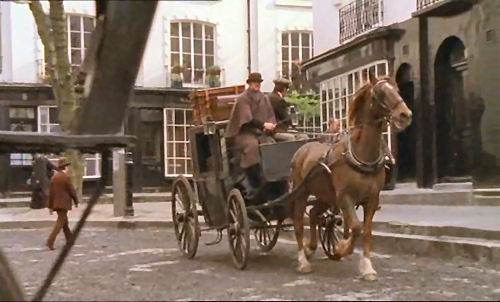 |
Tipping the Velvet The first Sarah Waters series from way back in 2002 is a story much more about lesbian love than the later adaptations, and is consequently a fair bit spicier. It concerns the career on Nan Astley as she leaves behind her family's Whitstable oyster restaurant for the glamour of the theatrical life in London. She has her ups and downs, as you can imagine, but the skill of the author and lesbian perspective prevents predictability. Rachael Stirling is eminently loveable as Nan and Sally Hawkins is in this one too, before her bigger part in Fingersmith. There are good turns too from Hugh Bonneville and Jodhi May. The use of London locations offers a mixed bag of the predictable and the odd. The well-filmed street of bow-fronted shops around Duke's Road near Euston Station (see left) gets a look in at least four times. More unusual is the use of St Michael's Alley off of Cornhill (see below) for the pub Nan and Flo leave and get jeered at by lesbophobes and for the alley they run off down after Nan gives them a tongue-lashing. And oddly Borough Market stands in for Charing Cross Station (see below left) with the help of a somewhat obvious nozzle pumping out steam. |
|
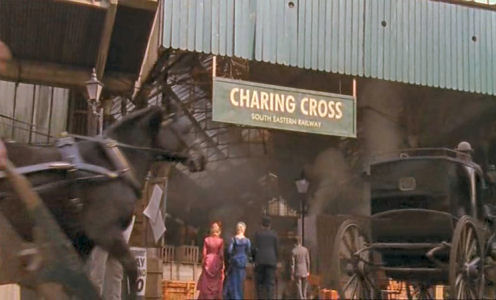 |
|
|
|
|
||
|
Twenty thousand streets under the sky Having read and loved the book I was shocked to see that a BBC adaptation had appeared and utterly passed me by. Thank goodness for DVDs. The series compressed the book into three episodes - one for each character's story. It thereby excessively compresses the first part - barman Bob's story - but moves bits of that story to Bella's tale at the end. The DVD merges the episodes into one, but Bob's story still zips past a bit too quickly, with his meetings with the prostitute Jenny now totally dominated by his partings with his hard-earned cash. Exterior location filming is suitably back-alley based and smacking of Soho and Fitzrovia. They even used The Prince of Wales Feathers, the pub that Hamilton based the fictional pub, The Midnight Bell, on - the feather design is there worked into the pub's windows. It's a fine and fitting adaptation: not slavish but capturing the time and atmosphere well with washed-out colour and quaint dance tunes. The three leads are not over-familiar, although the actress playing Bella the barmaid (Sally Hawkins) has this year (2008) made a splash in the new Mike Leigh film. As usual, though, there's the sterling Brit talent you expect, but can rarely put a name to, in the smaller parts. |
|
|
|
|
Wanted For Murder (aka A Voice in the Night) 1946 Eric Portman plays the son of a hangman who has inherited the need to end lives by strangulation, but in his case it's young women in the parks of London at night. The psychology-of-the-killer stuff is unexpected in a film this old, the posh clipped accents of all the characters who aren't servants or cab drivers is less surprising. But this is a well-acted and nicely written little oddity, with lots of location filming, giving interesting little peeks into, for example, a 1940's record shop and the Underground with blokes still smoking fags. And what are those brick bunkers in front of the Corn Exchange (left)? Probably not air-raid shelters as the entrance to the Underground is feet away. My favourite bit is a newspaper seller shouting 'woman found strangled - all the 'orrible details'. Emeric Pressburger is amongst the (many) writers who adapted this from a play and amongst the actors you'll spot old standbys like Stanley Holloway, Moira Lister, Wilfred Hyde White and Bonar Colleano, the go-to yank at that time. All rather Hitchcockian, then, with more that a few odd echoes of Strangers on a Train.
|
|
|
Wonderful London A collection of films recently restored by the BFI made in the 1920s by Harry B. Parkinson and Frank Miller. With titles like Dickens' London, London's Free Shows and London Off the Track the films have the touristy bent you'd imagine, with spice added by some bustling dockside filming and a film entitled Cosmopolitan London. This last one (they all last around 10 minutes) deals with London's immigrant centres with a weird mixture of pride, fascination and fear/racism. Of its time indeed, with talk of colonials and Lascars. The format is basically very much derived from the magazine the films share a name with - captions provided by intertitles (which are onscreen longer than the actual film) alternate with short filmed clips with very little camera movement, or art. The resulting films are a bit less interesting than this all sounds, but still fascinating in parts and often. There are buildings that didn't survive WWII here, and rare glimpses on film of White City and the Crystal Palace. Aside from the six fully-restored (and tinted) films there are six more that have had less work, and no tinting restoration, done on them. An essential purchase for the committed Londonophile, I'd suggest, who will also find words of interest in the accompanying booklet, which contains sage observations from Bryony Dixon from the BFI, Jude Rogers of Smoke magazine and Sukhdev Sandhu of Night Haunts fame. There's also a piece by Iain Sinclair in which he plies us with pointless erudite associations and so, as usual, it's all more about him than what he's writing about. He also works in a couple of tortuous anti-Olympics references, of course. More fascinating facts are found in the careers of the filmmakers. One of Harry B. Parkinson's biggest successes was called Trapped by the Mormons which, we are told, capitalised on a fad for 'white slave trade' subject matter started in Sweden in 1910. He later got into trouble with an unauthorised 1926 Charlie Chaplin biopic, featuring an actor called, I kid you not Chick Wango.
|
|
|
|
|
|
|